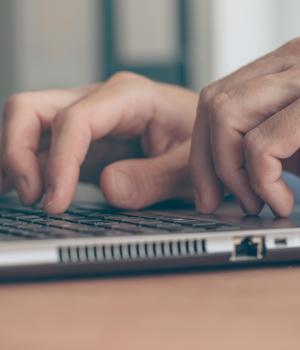Security News > 2004 > November > Pointillist Protection

http://www.computerworld.com/securitytopics/security/story/0,10801,97629,00.html Future Watch by Matt Hamblen NOVEMBER 22, 2004 COMPUTERWORLD Carnegie Mellon University is researching some of the biggest challenges in computer security, data availability and systems reliability through a year-old interdisciplinary program known as CyLab. Funded with federal dollars and contributions from 40 private companies, CyLab brings together graduate students and 30 professors, mostly in computer sciences, to work in teams on a wide range of research areas. For example, in September, Pittsburgh-based Carnegie Mellon won a $6.4 million grant from the National Science Foundation for an initiative called Security Through Interaction Modeling (STIM), which studies complex interactions between people, the computers they use and attacks from the outside. STIM will explore means of improving computer defenses by incorporating the models' behaviors into the defenses themselves. Another CyLab project takes the name of the French impressionist painter Georges Seurat, who painted vast canvasses with many tiny dabs, or "points," of paint, a process dubbed pointillism. The Seurat team at CyLab is developing methods to monitor anomalous behavior that may be induced by buffer overloads and other glitches. The Seurat technique compares a precomputed profile of how a system should be performing to the combination of all the application interactions with the operating system. "So it looks at a profile of what this system should be doing and says maybe this thing has been corrupted," explains Mike Reiter, technical director of CyLab and a professor of computer engineering and science. "It can track accesses and changes across many machines all at once or in a short time period." The Seurat project is so named because there are many layers, points or places where one might measure what is going on in a system in order to see evidence of an attack, much the same way the 19th century painter discovered that what we see comprises many points of color and light. The Seurat technique is a broad-brush approach to security, and indeed, the overall scope of CyLab's $10 million annual research mission is broad, says Pradeep Khosla, dean of the Carnegie Mellon College of Engineering and co-director of CyLab. "We want a world where we can push measurable, sustainable, secure, trustworthy and available data," explains Khosla. He says CyLab will attempt to help reduce the number of bugs in software, for example. Khosla estimates that for every dollar spent on computer hardware and software, it takes $6 to $8 in personnel costs to maintain it. For that reason, vulnerability analysis is part of the CyLab program as well as malicious code detection. But even more basic, several projects at CyLab are devoted to creating self-healing systems that can survive malicious attacks, Khosla says. "We know attacks exist, so you can either build a system that survives the attack or find a way to stop the attack," Khosla says. "But trying to find a way to stop attacks is akin to saying, 'I'll kill all the bacteria and viruses out there.' Instead, we are going to find a way to live with worms and attacks with self-healing." CyLab's immediate work on self-healing is a project called Self * Storage System, which researchers are about to demonstrate to the U.S. Army and will show publicly in six months or so. The idea is that there is no single point of failure in a system, especially storage, so if a piece of information is corrupted, the system can quickly determine that and automatically set itself back to its original state. The system survives the attack without actually finding a way to prevent it, Khosla explains. Reiter says Self * Storage is also about improving management of large-scale storage systems in a process some call autonomic computing. Cell Phone Remote Control Another vision at CyLab is to use smart phones as ubiquitous access control devices. It is an idea that mobile phone companies have already implemented, but CyLab is working on new approaches to making that vision very scalable. As a hypothetical example, Reiter cites the intrepid business traveler flying halfway around the world and using his cell phone as a key to open his hotel room door. The idea goes far beyond promoting a single standard and instead involves what Reiter calls a "flexible access-control network which allows new policies to be introduced into a system to permit devices to work." The traveler would have his credentials transferred to the hotel from his phone by Bluetooth or ultrawideband technology, with a hotel room digital key transferred back to reside on the phone. There would be no problem if the phone was stolen, because it would authenticate the user by PIN or thumbprint before revealing the key. Using its WAN capabilities, the phone would request permission from a remote server, perhaps at the traveler's place of employment, which wouldn't know the key but could authenticate the traveler based on the PIN or thumbprint. Once clearance was granted, the phone would be allowed to complete the computation of the cryptographic key to allow the traveler to get some sleep. Reiter says CyLab is starting to demonstrate this capability and will move forward with the opening this winter of the Collaborative Innovation Center, a facility in which researchers will be able to control building functions using smart phones. _________________________________________ Open Source Vulnerability Database (OSVDB) Everything is Vulnerable - http://www.osvdb.org/
News URL
http://www.computerworld.com/securitytopics/security/story/0,10801,97629,00.html